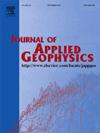面波频散曲线反演的融合网络
IF 2.2
3区 地球科学
Q2 GEOSCIENCES, MULTIDISCIPLINARY
引用次数: 0
摘要
为了快速准确地获取地下横波速度结构,本文提出了一种融合网络反演分析方法,解决了传统种群搜索优化反演方法计算成本高、适用性有限的缺点。该方法使用深度学习训练时间代替计算时间,实现了频散曲线的近实时反演。本文根据不同区域的Vs-h经验关系建立了色散曲线速度结构的数据集,并在此基础上构建和训练融合网络模型(PSO-LSTM-1DCNN-DNN),在验证集和测试集上都取得了良好的效果。此外,本研究还在色散曲线中加入10%高斯噪声来分析其不确定性,并通过对抗性自编码器(AAE)提高算法的抗噪声能力。结果表明,该融合网络显著提高了表面波频散曲线反演的精度和效率。本文章由计算机程序翻译,如有差异,请以英文原文为准。
A fusion network for surface wave dispersion curves inversion
In order to obtain the subsurface shear wave velocity structure quickly and accurately, in this paper, a fusion network inversion analysis method is proposed to solve the disadvantages of the traditional population search optimization inversion method, which has high computational cost and limited applicability. The method uses deep learning training time instead of computing time, so as to achieve near real-time inversion of the dispersion curve. This paper establishes the data set of the velocity structure of the dispersion curves according to the Vs-h empirical relationship in different regions, and constructs and trains the fusion network model (PSO-LSTM-1DCNN-DNN) on this basis, which has a good effect on both validation and test sets. In addition, this study also add 10 % Gaussian noise to the dispersion curve to analyze its uncertainty, and improve the anti-noise ability of the algorithm by Adversarial Autoencoder (AAE). The results show that the accuracy and efficiency of surface wave dispersion curve inversion are significantly improved by the fusion network.
求助全文
通过发布文献求助,成功后即可免费获取论文全文。
去求助
来源期刊

Journal of Applied Geophysics
地学-地球科学综合
CiteScore
3.60
自引率
10.00%
发文量
274
审稿时长
4 months
期刊介绍:
The Journal of Applied Geophysics with its key objective of responding to pertinent and timely needs, places particular emphasis on methodological developments and innovative applications of geophysical techniques for addressing environmental, engineering, and hydrological problems. Related topical research in exploration geophysics and in soil and rock physics is also covered by the Journal of Applied Geophysics.
 求助内容:
求助内容: 应助结果提醒方式:
应助结果提醒方式:


